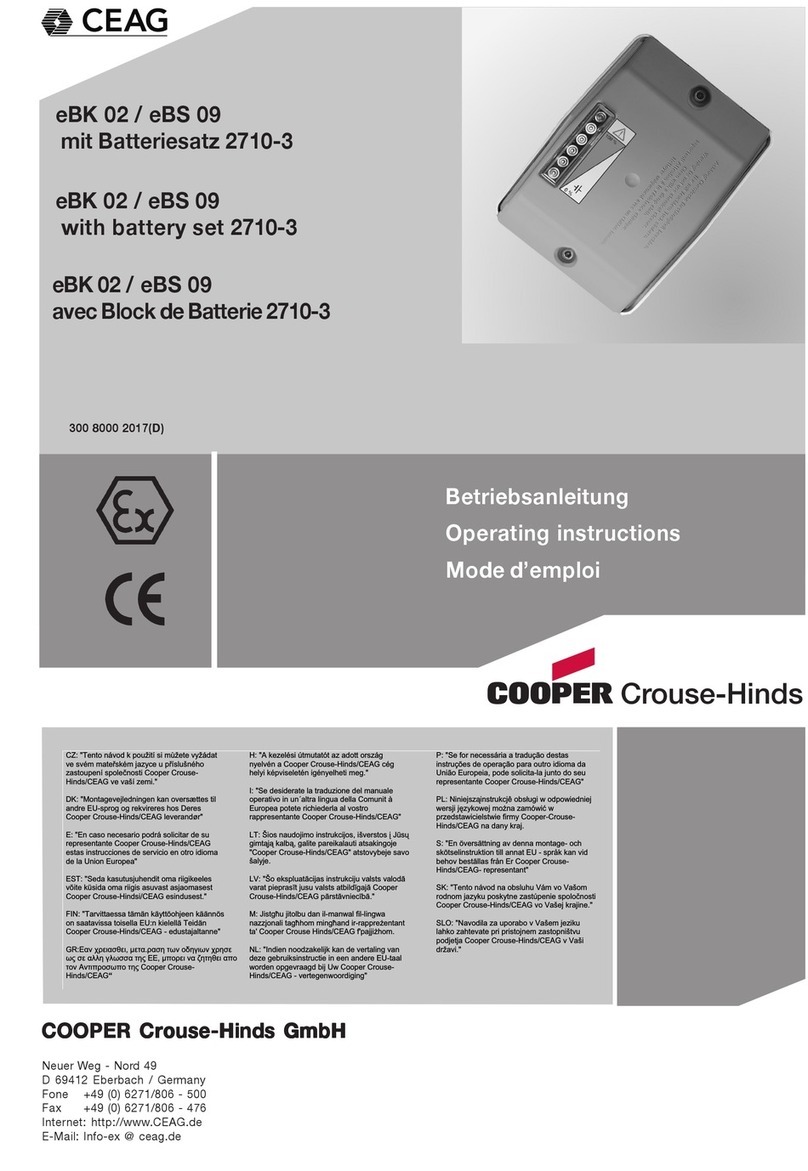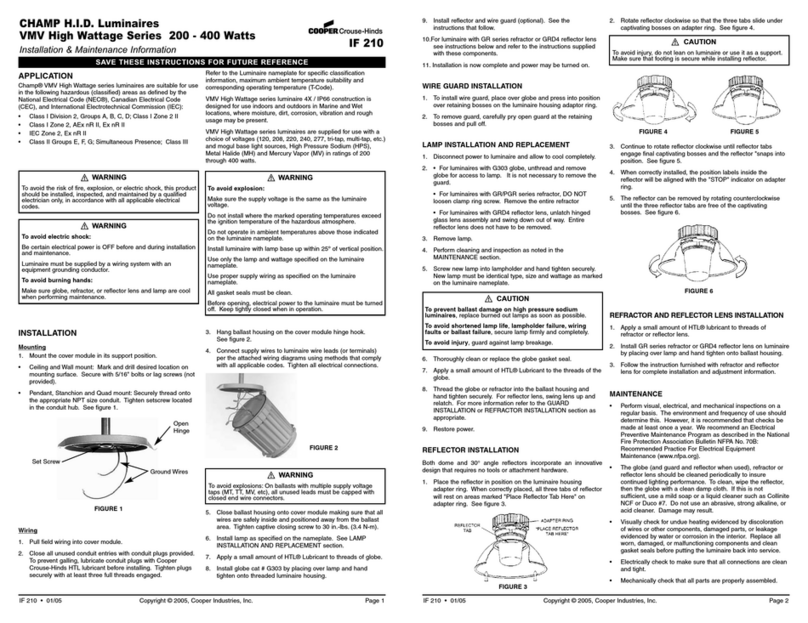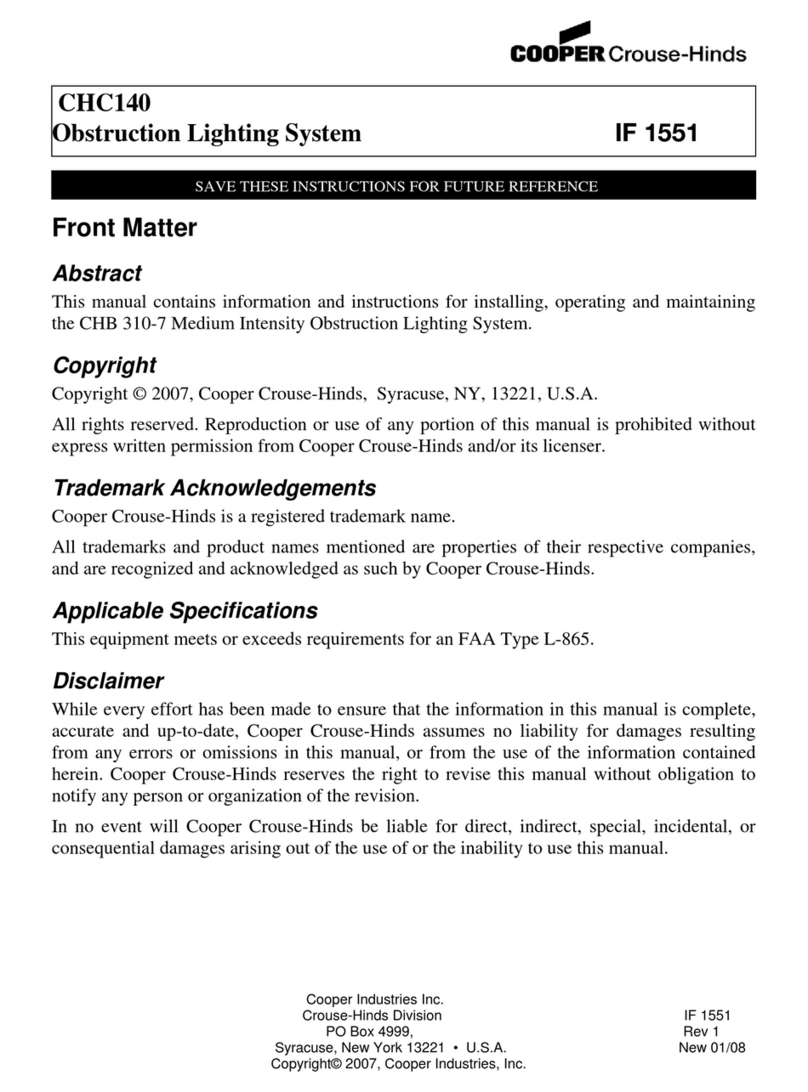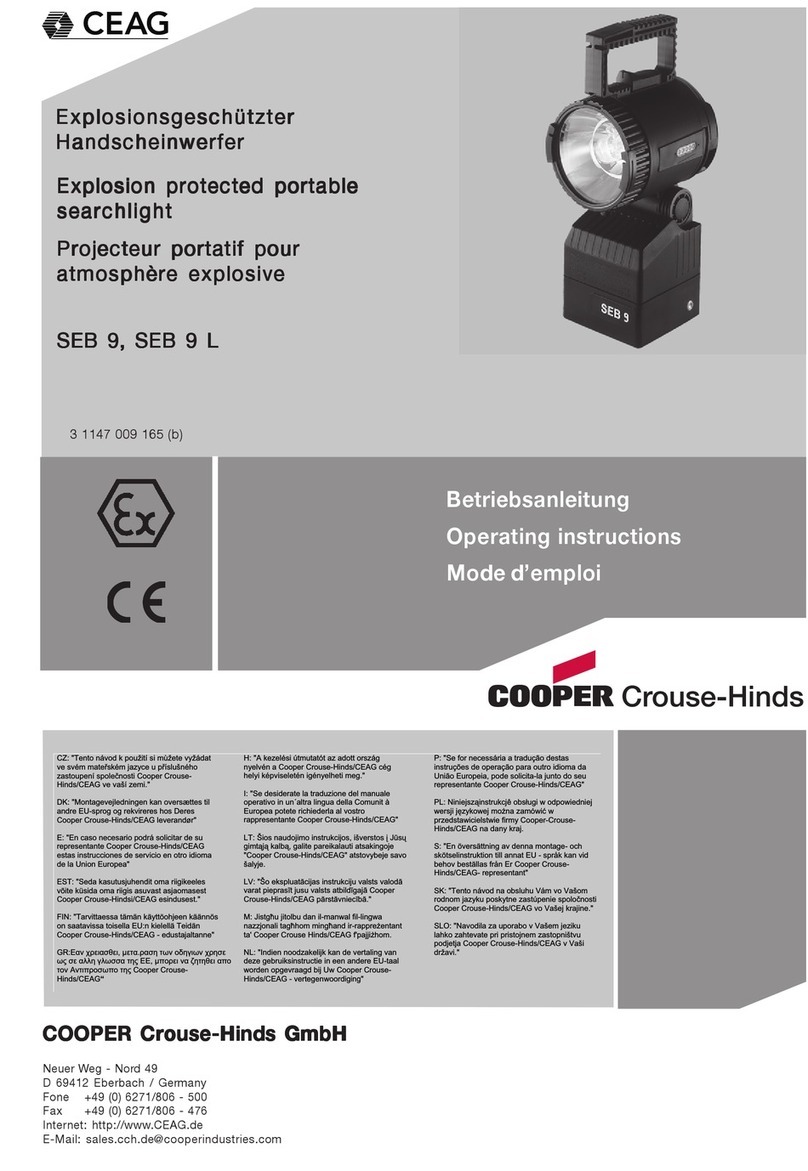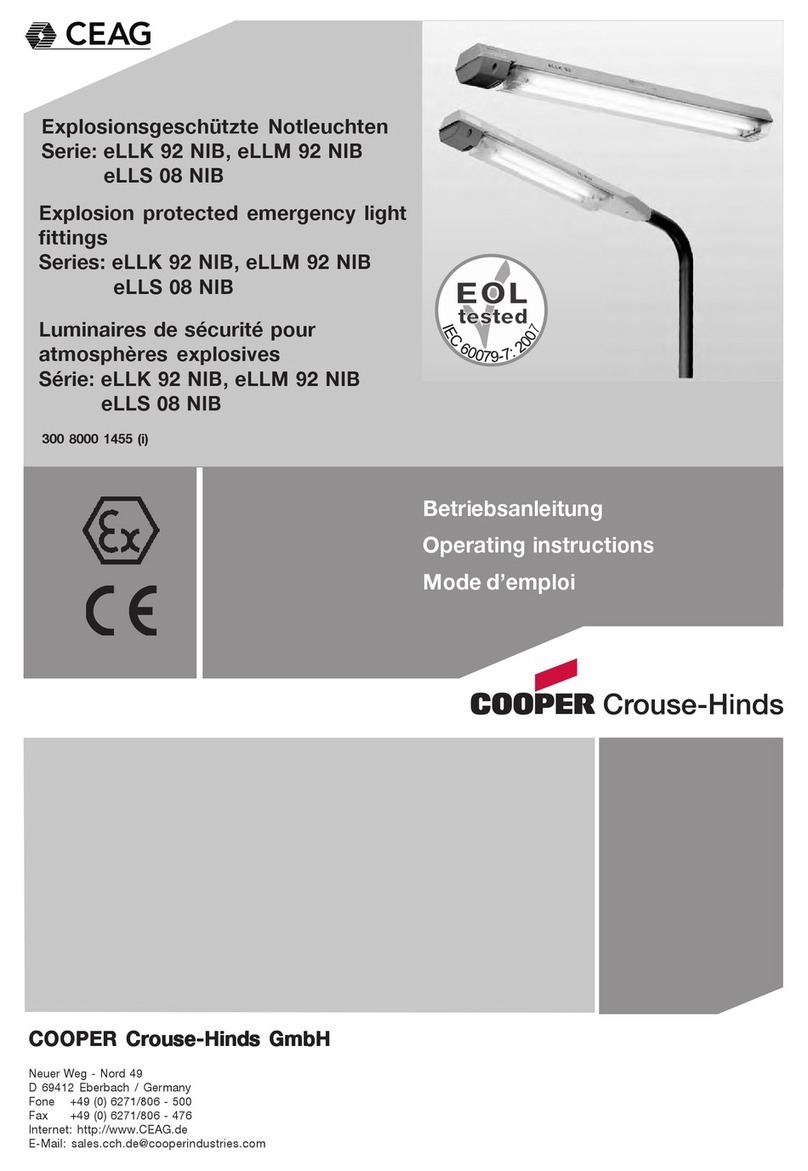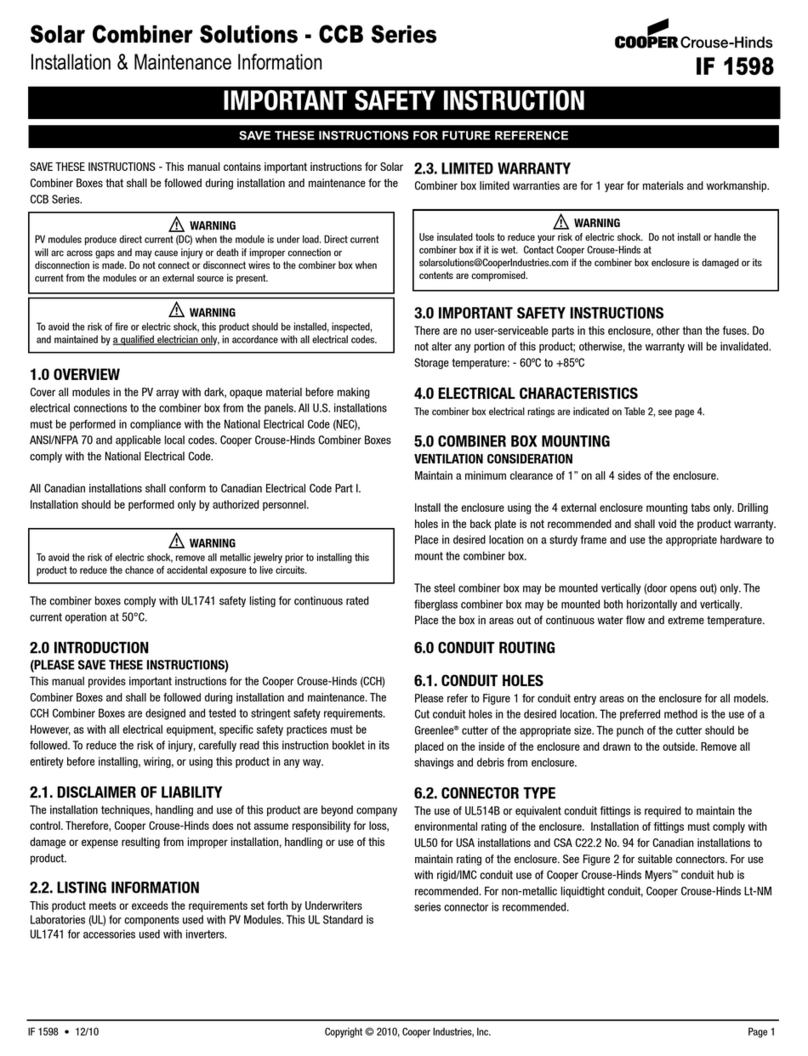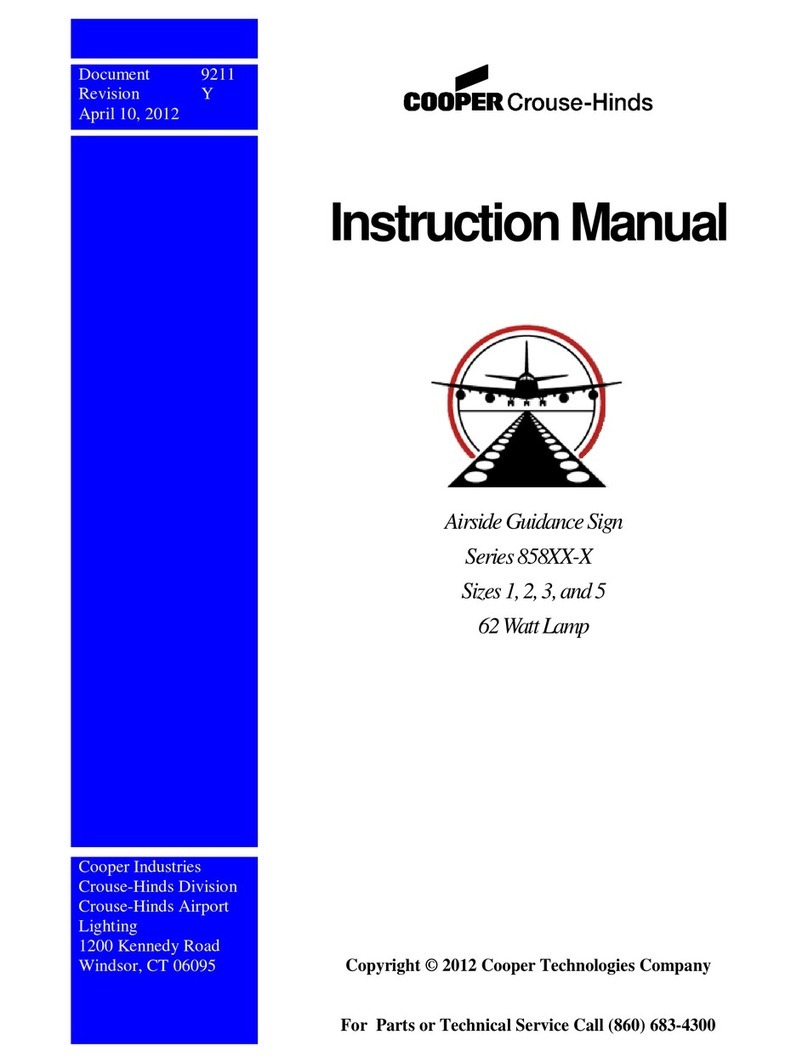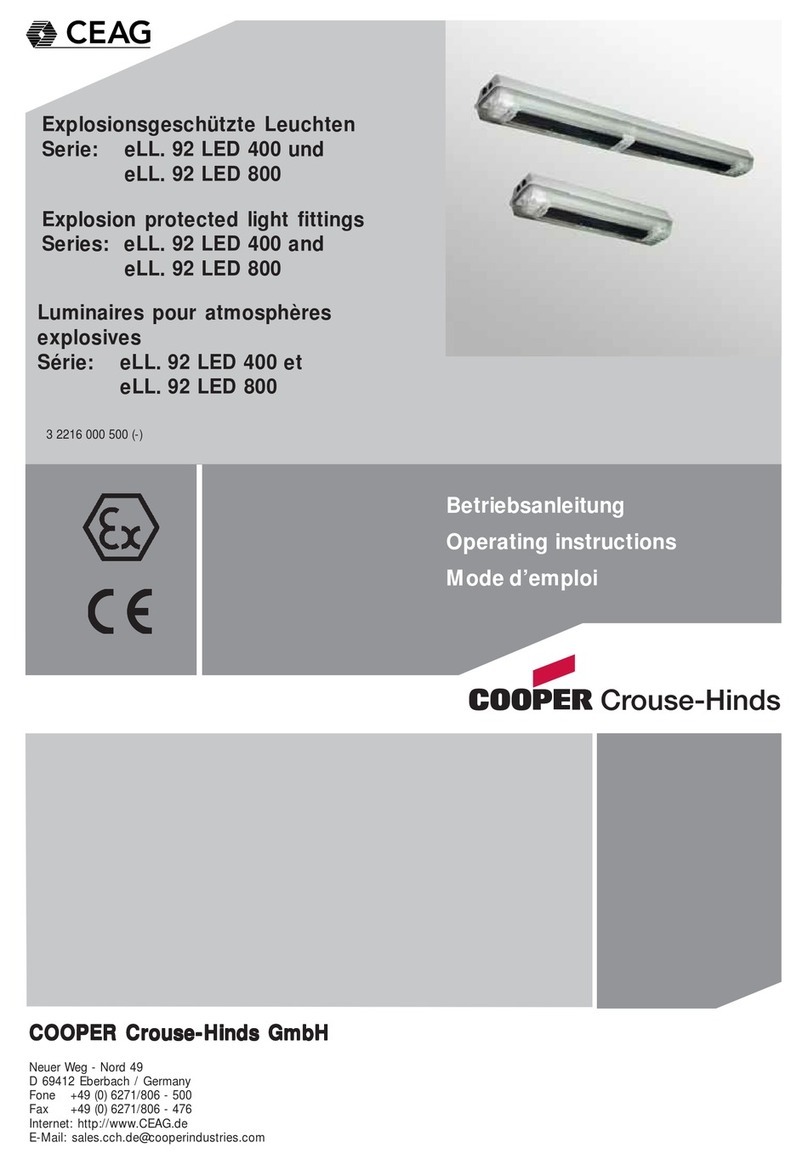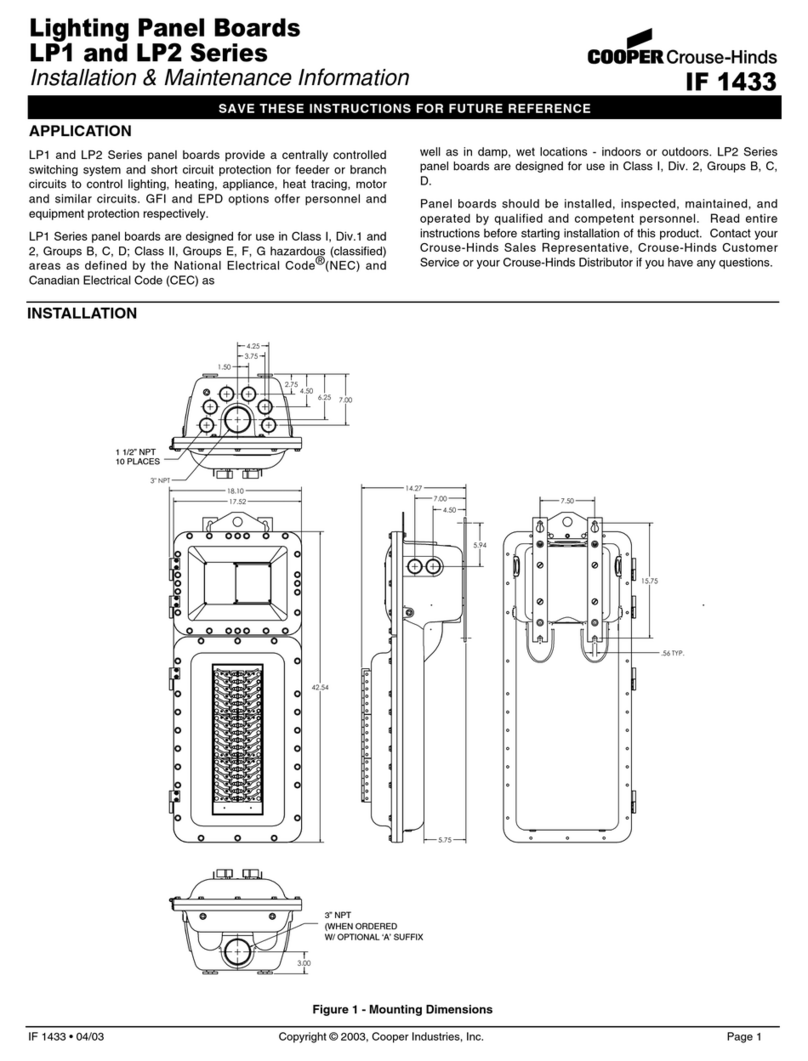
Cooper Industries Inc.
Crouse-Hinds Division IF 1544
PO Box 4999, Rev 1
Syracuse, New York 13221 • U.S.A. New 01/08
Copyright© 2007, Cooper Industries, Inc.
Installation Checklist .......................................................................................................... 10
Section 3 — Maintenance and Troubleshooting..................................................................... 22
Safety .................................................................................................................................. 22
Preventive Maintenance...................................................................................................... 22
Storage ................................................................................................................................ 22
RFI Problems...................................................................................................................... 22
Component Testing............................................................................................................. 23
Wiring and Cabling......................................................................................................... 23
Inspection........................................................................................................................ 23
Capacitors ....................................................................................................................... 23
C1 — High Intensity Capacitor Bank............................................................................. 23
C2 — Medium Intensity Capacitor................................................................................. 23
C3 — Low Intensity Capacitor....................................................................................... 24
C4 — Tuning Capacitor.................................................................................................. 24
FT101 — Flashtube ........................................................................................................ 24
K1, K2 — Mode Relays, 24-volt DC Coil...................................................................... 24
K3 — Discharge Relay, 120 VAC Coil.......................................................................... 24
L1 — Burst Choke.......................................................................................................... 24
L2 — Flash Choke.......................................................................................................... 24
PCB1 — Timing and Trigger Board............................................................................... 24
R1A, R1B — Bleed Resistors......................................................................................... 24
PCB2 — HV Rectifier Board ......................................................................................... 24
R2A, R2B — Burst Resistors ......................................................................................... 24
T1 — Power Transformer............................................................................................... 24
PCB3 — Sense Module.................................................................................................. 25
T101 — Trigger Transformer......................................................................................... 25
VR1 — Suppressor Assembly........................................................................................ 25
Troubleshooting.................................................................................................................. 25
Component Removal and Replacement.............................................................................. 28
Removal & Replacement — General ............................................................................. 28
Section 4 – Recommended Spare & Replaceable Parts.......................................................... 32
Customer Service................................................................................................................ 32
Ordering Parts..................................................................................................................... 32
Beacon / Power Converter Parts......................................................................................... 32
Flashhead Parts ................................................................................................................... 32
Returning Equipment – Return Material Authorization (RMA)......................................... 37
Return to Stock Policy.................................................................................................... 38
Appendix 1 – Programming the Timing and Trigger Board................................................... 39
Connecting the Handheld.................................................................................................... 39
Using the Programmer........................................................................................................ 39
SETUP for Non S Versions ............................................................................................ 41
SETUP for S Versions.................................................................................................... 41
Parameters for Non S Versions....................................................................................... 41
Parameters for S Versions............................................................................................... 42
INFO............................................................................................................................... 43
MODE CHANGE........................................................................................................... 43
Appendix 2 - CHB 204SPB and 207SPB Primary Backup.................................................... 45
Operation............................................................................................................................. 45
